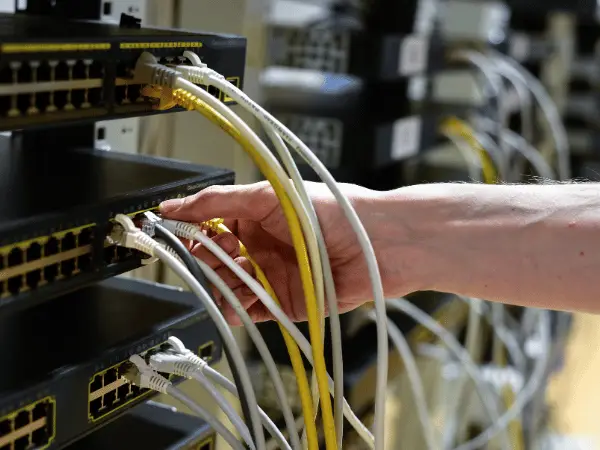In recent years, SIP Trunking Services have become a leading choice for enhancing organizational communication, with over half of all North American businesses already utilizing SIP trunking as a trusted communication tool.
In our increasingly connected world, businesses that prioritize investment in reliable technologies are the ones who see optimal results in their operations. Communication technologies, like SIP trunking services, are no exception.
At LayerLogix, we provide businesses with effective SIP trunking solutions, transforming the way organizations communicate both internally and externally.
So, what exactly is SIP trunking? How does it operate, and why is it a superior alternative? Should your organization switch to SIP trunking? Let’s delve into these questions and offer some clear answers.
SIP, or Session Initiation Protocol, is a method used to transmit voice and other unified communications over the Internet. This innovative technology is quickly replacing traditional voice communication channels such as telephone lines and PRIs, offering a more cost-effective, stable, and reliable solution.
Through an IP-enabled PBX (Private Branch Exchange), SIP trunking offers a robust alternative to PSTN-based telephone systems, eliminating the need for physical networks. It can be considered a highly efficient virtual phone line that digitizes voice data for efficient transmission over the Internet.
Thanks to SIP channels, multiple high-quality voice calls can occur simultaneously without interference, offering a highly dynamic and scalable communication solution.
It’s essential to distinguish between SIP trunking and VoIP when considering an upgrade in communication solutions.
While SIP trunking refers to the specific method detailed above, VoIP, or Voice Over Internet Protocol, is the broader term used to represent the entire range of methods and solutions available for making voice calls over the Internet.


Current SIP trunking solutions utilize G.711 and G.729 codecs, ensuring an optimal user experience. These codecs compress and decompress audio signals for efficient transmission over the Internet. G.711 codec transmits uncompressed, high-quality audio, while G.729 codec uses less bandwidth, sacrificing some quality for efficiency.
Carrier tiers significantly influence audio quality in SIP trunking. To ensure reliable, high-quality voice communication, it is recommended to opt for Tier-1 carriers that connect directly to the Internet’s backbone.
Quality of Service, or QoS, is a router setting that prioritizes voice calls over other network traffic, allocating necessary bandwidth to maintain optimal call quality. This setting is particularly useful when network-intensive activities are occurring, such as high-speed downloads.

Investing in advanced technologies is crucial for organizational efficiency and growth. Effective communication forms the backbone of any successful enterprise, and technologies like SIP trunking are revolutionizing this essential aspect of business operations.
With benefits like unlimited local and international calls, network consolidation, application integration, instant messaging, and more, SIP trunking offers a comprehensive solution to meet your communication needs without prohibitive costs.
If you’re interested in SIP trunking services and would like more information, contact LayerLogix today. Our team will be more than happy to assist you further.
Serving The Woodlands, the Greater Houston Area, Austin, & Dallas. LayerLogix is a trusted business partner for Expert IT and structured cabling solutions based in The Woodlands, Texas.